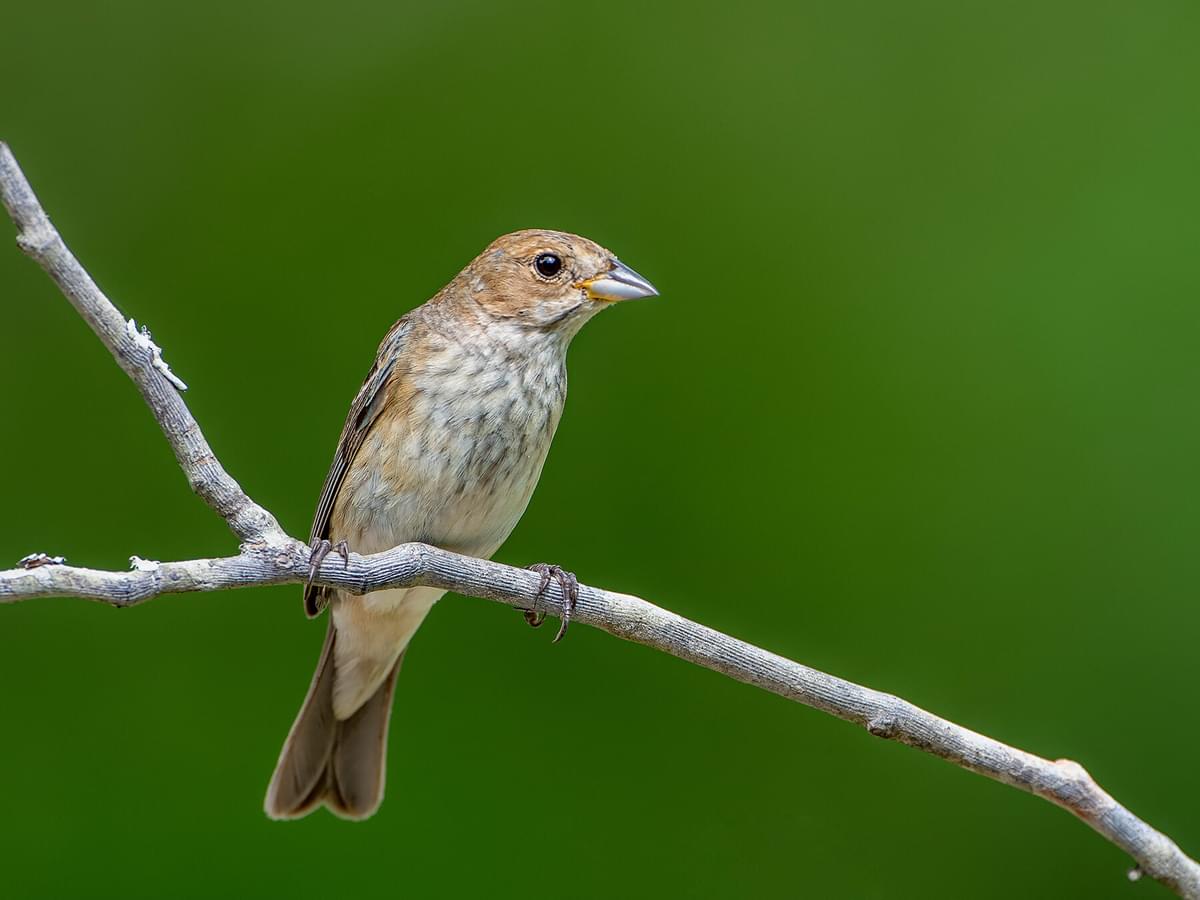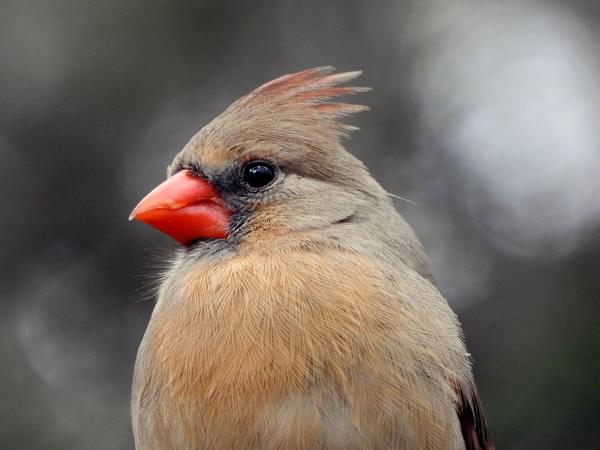Female Indigo Buntings (Identification Guide)
Last updated: 14 November 2022

Indigo buntings are a delight to observe, particularly during the breeding season when their plumage is showier. They are present throughout the eastern half of the United States and the desert southwest during the breeding season. Buntings migrate to Mexico, Central America, and the Caribbean in winter.
Female indigo buntings are not as bright as the males, showing little to no blue coloration even during the breeding season. As with many other bird species, the females are more earth-toned to blend better with their surroundings. This, of course, helps camouflage the female and ensure the success of nestlings.
The female’s plumage is not the only difference between her and a male indigo bunting. She also exhibits several behavior differences, particularly concerning nesting behavior.
In this complete guide, we will dive deeper into the specific characteristics of the female indigo bunting. Read on to discover more!

Close up of a perched Indigo Bunting female
How can you tell if an indigo bunting is male or female?
Indigo buntings are sexually dimorphic during the breeding season, meaning their plumage differs this time of year. In the spring and summer, males have brilliant blue plumage that is slightly darker around their heads and faces. Their bills are silvery-gray. On the other hand, females are buff-brown overall, with an off-white throat and streaking on the breast. Occasionally, females have light blue plumage on their wings.
Outside of the breeding season, males are darker, with more brown plumage. However, they still have blue on their wings and tail feathers, whereas females are almost solid brown.
Juvenile indigo buntings are more similar in color to females. They are brown overall with light gray undersides and more defined streaking. Immature, or non-breeding, males appear patchy blue and brown all over.

Female Indigo Bunting

Male Indigo Bunting
What does a female indigo bunting look like?
Adult female indigo buntings have soft buff-brown plumage, occasionally with hints of blue on the wings and tail. They are slightly darker and duller in the winter.
Are female indigo buntings bigger than males?
Female indigo buntings are slightly smaller than males. They generally measure around 63.2 mm, whereas males average 66.7 mm. Males also have slightly more mass than females overall. However, female indigo buntings gain mass during nesting season, appearing nearly equal in size to males.

Female (left) and male (right) Indigo Buntings perched at a feeder
Behavior differences
Female indigo buntings exhibit a few behavioral differences from males. Most notably, their differences lie in singing, nesting, incubation, and feeding behaviors. Knowing what to look for when observing indigo buntings will help you identify adult and juvenile females from males.
We will take a closer look at these differences in the following paragraphs.
Singing and Calls
Female indigo buntings do not sing. Only males exhibit this behavior, which is important in announcing their territory to other males and their bachelor status to females.
The female bunting does have a repertoire of calls that she will give under certain circumstances. Chip is a mild distress call given when people approach or as young leave the nest. Eeee is a more serious distress call used when a known predator is near the nest. Females also have a ti-ti-ti-ti twittering call used to solicit mating.

A pair of Indigo Buntings perched in a tree together
Nesting
Female indigo buntings build their nests without the help of their mate. Males do not even accompany the female most of the time. To begin the nesting process, females visit various potential sites of low-growing understory vegetation, such as a raspberry patch.
Once a site is chosen, the female begins collecting nesting material - primarily stems, leaves, strips of bark, and grass. Nests are typically built in the crook of three branches and held in place with spider silk. Construction may take as long as 8-10 days early in the season but is often shortened to no more than two days for later nests.
Female buntings have a ventral brood patch which is de-feathered once the nest is built. This patch remains bare through the nesting season, until the female molts. Males do not have a brood patch.
Incubation
Incubation is performed solely by the female indigo bunting as well. It begins once the last egg of the clutch is laid. Before then, the female only stays with the nest during rainy or cold weather.
Males may remain near the nest while the female incubates, giving alert calls when disturbed, but generally, they show no interest in the eggs. Male indigo buntings also do not bring food to the female while she is on the nest. Instead, incubation is periodically interrupted for the female to forage.

Female Indigo Bunting feeding chicks in the nest
Feeding
Once the eggs hatch, the female broods the chicks for the first six days. Brooding is not constant, as the female must also leave the nest to forage for herself and the clutch. Females continue to provide food for a period even once the nestlings have fledged.
Males do not forage for their mates or chicks at this stage either. Occasionally, male indigo buntings provide some parental care closer to when the clutch leaves the nest. Overall, males are minimally involved.
Can female indigo buntings raise young alone?
Female indigo buntings can certainly raise their young alone. Even with a mate present, the females already provide nearly all parental care. Unlike many other bird species, female indigo buntings do not rely on their mates to provide food during incubation and brooding. Instead, she leaves the nest for a short period to provide for herself and her young.
Interestingly enough, male indigo buntings appear to not associate their young as being their own. This is believed to be the reason behind their lack of parental care. Researchers question whether females also lack this association. They take care of their young, but will also provide for the chicks of other birds (primarily the cowbird) when their nests are parasitized.





